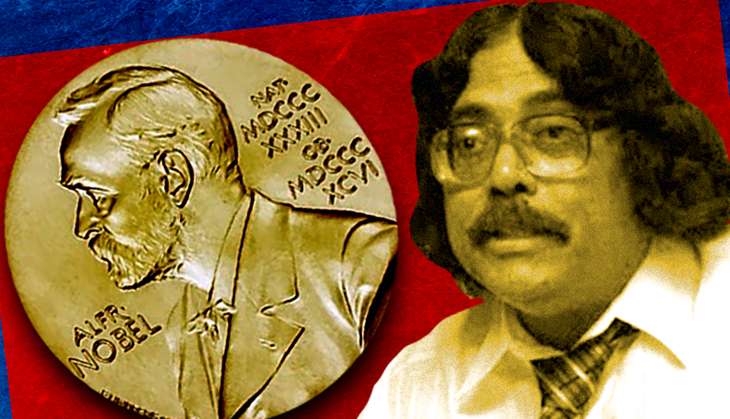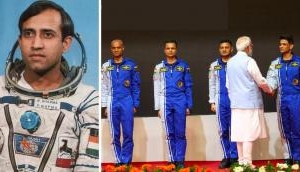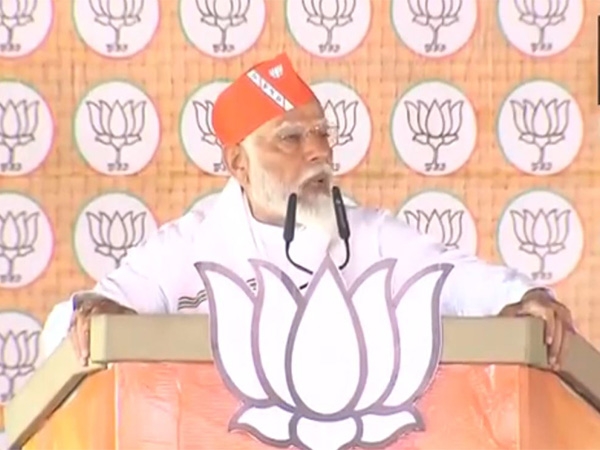Indian physicist denied chemistry Nobel twice. Will he be third time lucky?

The selection process for the Nobel Prize is often shrouded in mystery. The dons who form the selection committees at the Royal Swedish Academy of Sciences, in particular, have a pattern which is often challenged. But nothing is ever revealed to the public.
India-born scientist Mrinal Thakur has been at the wrong end of the academy's choices - twice. Thakur is a physicist who works at the Auburn University in Alabama, USA.
The first instance
In 2000, the academy chose two American and one Japanese chemist for the chemistry Nobel - Alan J Heeger (University of California, Berkeley), Alan G MacDiarmid (University of Pennsylvania, Philadelphia) and Hideki Shirakawa (University of Tsukuba, Japan).
The three scientists discovered that plastics can conduct electricity, refuting the belief that they cannot - the very reason why electrical wires are encased in plastic coating.
The Nobel awardees said polymers - molecules of plastics that repeat their structure regularly in long chains - can conduct electrical energy if they are 'doped' with iodine (doped means electrons are introduced or removed, through reduction or oxidation). All that's required to conduct electric current are alternating single and double bonds of carbon atoms.
This was indeed a path-breaking scientific discovery, and one with huge commercial value. But that's not the whole story. One must also consider what is called the 'Thakur accelerator'.
Thakur's research began at the AT&T Bell Laboratory. And while the Nobel winners talked of conjugated polymers - where the molecules are conjoined without any gaps between them - Thakur's research showed that plastic molecules could conduct electricity even when non-conjugated.
In other words, Thakur was traversing a path which was even more important than what the Americans and Japanese had found.
He brought this to the attention of the Nobel committee in 2000 itself. But he was ignored. The academy did not explain either.
The second disappointment
In 2014, Thakur was again denied a Nobel. That year, the Nobel was awarded for 'Super-resolved Fluorescence Microscopy'.
This means if a material has efflorescence (the migration of a salt to the surface of a porous material, where it forms a coating), its properties can be observed through a sensitive microscope.
Thakur, who has been publishing material on the subject since 1985, alleges that because he put the Nobel committee in the dock, the funding of his laboratory at Auburn University, called the 'Photonic Materials Research', has been stopped. He is out in the cold as far as research is concerned, even though Auburn continues to assign him teaching and supervising tasks.
Thakur has recently written to the Swedish Prime Minister, and to Indian PM Narendra Modi for help. His peers have nominated him for the 2016 chemistry Nobel. But will it be third-time lucky for him?
Edited by Shreyas Sharma
More in Catch
What are neutrinos and why are they worth the Nobel Prize in Physics?
Nobel prize given to medicine trio for discovering treatment against parasites
Malala Day: 7 must-know facts about the youngest Nobel prize winner
First published: 8 August 2016, 7:25 IST





![BJP's Kapil Mishra recreates Shankar Mahadevan’s ‘Breathless’ song to highlight Delhi pollution [WATCH] BJP's Kapil Mishra recreates Shankar Mahadevan’s ‘Breathless’ song to highlight Delhi pollution [WATCH]](http://images.catchnews.com/upload/2022/11/03/kapil-mishra_240884_300x172.png)

![Anupam Kher shares pictures of his toned body on 67th birthday [MUST SEE] Anupam Kher shares pictures of his toned body on 67th birthday [MUST SEE]](http://images.catchnews.com/upload/2022/03/07/Anupam_kher_231145_300x172.jpg)


_251372_1280x720.jpg)
_251371_1280x720.jpg)


